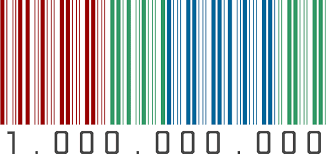08 October 2020
What does a billion or a trillion
mean to you?
By Richard Pooley

Here is an extract from a BBC Business report of 19 June this year: “The borrowing splurge sent total [UK] government debt surging to £1.95trn, exceeding the size of the economy for the first time in 50 years.” And in the next paragraph: “The ONS estimates borrowing in financial year 2020/21 will [be] £298bn.”
What do you think when you read £1.95trn and £298bn? How about £1.95 trillion and £298 billion? Or £1,950 billion and £298 thousand million? Or £1,950,000,000,000 and £298,000,000,000? Do these numbers mean anything more if I tell you that £298bn might pay to build 850 hospitals in the UK, or would pay a salary of £5,900 to every British person over the age of 19?
We are now in an age where we are asked to get our heads around billions and even trillions on a daily basis. One moment we are trying to understand what a national debt of £1.95 trillion means for our grandchildren, the next why a man who boasts of possessing many billions of dollars ($2,500,000,000 according to Forbes on 28 September) only paid $750 in US income tax last year.
Our understanding is not helped by the fact that not all people define a billion and a trillion in the same way. Old Brits like me can remember when a British billion was a million million and not a thousand million as is the case in the USA, in the UK now and in the worlds of Science and Finance. The French, Germans and Dutch call a billion milliard, milliarde and miljard respectively, which adds to the confusion. Worse, the French still regard a billion as a million million and a trillion as a one with 18 zeros after it, not 12.
The trouble is that most of us see a million, a billion, a trillion as equivalent to 1, 2, 3 instead of how they really relate to each other: 1 – 1,000 – 1,000,000. Professor Andrew Hwang, an American Professor of Mathematics, gave a good example of this misconception in an article he wrote in The Conversation on 24 November 2017. After the financial crisis of 2008-9 the US company AIG was bailed out by US taxpayers to the tune of $125 billion. However, AIG’s executives were forced to pay back bonuses totalling $165 million. The latter was spun as good news for US taxpayers. But if you scale these figures down to something we can easily see in our mind’s eye, something which Hwang recommends we all do when politicians, experts and journalists throw big numbers around, we can see that this was paltry recompense for US taxpayers. “On a scale where a million dollars is one penny, the AIG bailout cost taxpayers $1,250… On the bright side we recovered $1.65 in executive bonuses.”
When showing how fooled we can be comparing a million to a trillion, Hwang went on to say “a saving of $200 million might sound comparable to a $20 trillion cost. Scaling reveals the truth: one is a $2 beverage, the other the $200,000 price of an American home.”
The dangers of not understanding this was brought home to me this summer. I was listening to a BBC radio presenter interviewing a Tory MP who was arguing for £30 million of UK taxpayer money to be spent on a pet project of hers. My memory is hazy; I can’t recall the names of either person or the nature of the project. But I know that the project had been costed at £30 million; I’d read about it beforehand. For some reason though the presenter asked the MP if, in these difficult times, it was right that £30 billion should be spent on such a project. The MP hesitated before answering. Why didn’t she correct her interviewer? She didn’t. She said something along the lines that £30 billion was still not a lot when the Chancellor of the Exchequer was spending thousands of billions keeping people in jobs and stopping businesses going bust.
Does it matter if we can’t “see” a million, a billion or a trillion? Yes, if the truth is hidden from us by clever but misleading analogies which seek to persuade us to support a particular proposal. For example, during the UK’s Brexit Referendum, where did the notorious £350 million figure on the side of the Leave campaign bus come from? The Remainers bleated that the EU was not, in truth, costing the UK £350 million a week. They would have done better to have examined the fraudulent claim in full: The EU costs us £350 million a week. That’s enough to build a new NHS hospital every week of the year.”
Analogies are, like Hwang’s scaling, an excellent way of making sense of big numbers. But only if they are based on solid, verifiable facts. British politicians seem to have decided there is a new unit of measuring public spending these days: the number of hospitals that any given pile of money can pay for. This is nonsense. How much does it cost to build a hospital in the UK? £7 million? This was the cost of building a Mental Health hospital in Cornwall recently. Or the £1,100,000,000 / £1.1 billion / £1,100 million that it cost to rebuild Bart’s hospital in London? Even the Brexiteers could not agree what the figure was. The official Leave campaign said it was £350 million. Brexit-supporting Conservative MEP Daniel Hannan said it was €700 million (£600 million at the time).
The Left is as guilty as the Right in using the bogus hospital-cost analogy to argue their case. The Huffington Post once reported on Jeremy Corbyn’s wish to abolish the UK’s Trident nuclear deterrent. The journalist wrote that the £100 billion saved would pay for 56 hospitals to be built, based on an estimated cost of £178 million each. It’s not clear if this was his analogy or the Labour Party’s. Whoever it was was no mathematician (perhaps it was Corbyn’s ex-girlfriend Diane Abbott). At that rate £100 billion would pay for 560 hospitals, not 56.
Analogies which explain big numbers well are tough to come up with. The one that has long been most popular among British journalists is the football pitch, as in:
“The world lost 3.8 million hectares of tropical primary forest in 2019 – equivalent to a football pitch every 6 seconds.”
“Football pitch of Amazon forest lost every minute.”
If you are a football fan, that is probably a fairly effective analogy. But what comes to mind? The pitch at Anfield or the one your children play on? There is no standard pitch size. It can vary from 10,800 m² to 4,050 m². Still, 6 seconds to clear a football pitch of trees, whatever its size, is stunning.
Another common British reference point for size is Wales, as in:
“Russia covers 17,090,000 km². Wales could fit into Russia 823 times.”
I am not Welsh and I cannot “see” Wales. To be honest, as an Englishman and despite being a geographer, I don’t “see” England either. My fellow geographers and I at Exeter University did an exercise in our first week. We were asked to draw an outline of England, Wales and Scotland. Most of us were from the south of the UK and drew maps which shrunk Scotland and bigged up southern England. The Scot did the reverse. Only the few Northern English got the map about right. I have been to Russia four times, always to Moscow. That made me an expert on Russia in one friend’s eyes, who asked me how big the country was. I gave her the seventeen million square kilometre answer. She looked blank. I then reminded her that I had been flying from London to Tokyo over Russia two or three times a year for the previous ten years:
“It takes three hours to fly from London to Moscow. It takes another seven hours before we’re clear of Vladivostok and I can see the Pacific Ocean below me.”
If I could make one request to journalists and broadcasters on the matter of billions, it would be to write and say “a thousand million” rather than “a billion”. I can grasp a million and, just about, a thousand more of them. But a billion? So, when writing, write out all the zeros the first time a number is given and then its shorter form subsequently (e.g. £298,000,000,000 … £298 thousand million). And, when speaking, say “Two Hundred and Ninety-Eight Thousand Million Pounds.” Every time. Make the listener think what that means. And if you can come up with a zinger of an analogy straight away or scale that billion down as Professor Hwang advises, you will be on your way to being as revered as the UK’s newest national treasure – economist, journalist and presenter of the BBC’s More or Less programme, Tim Harford.


